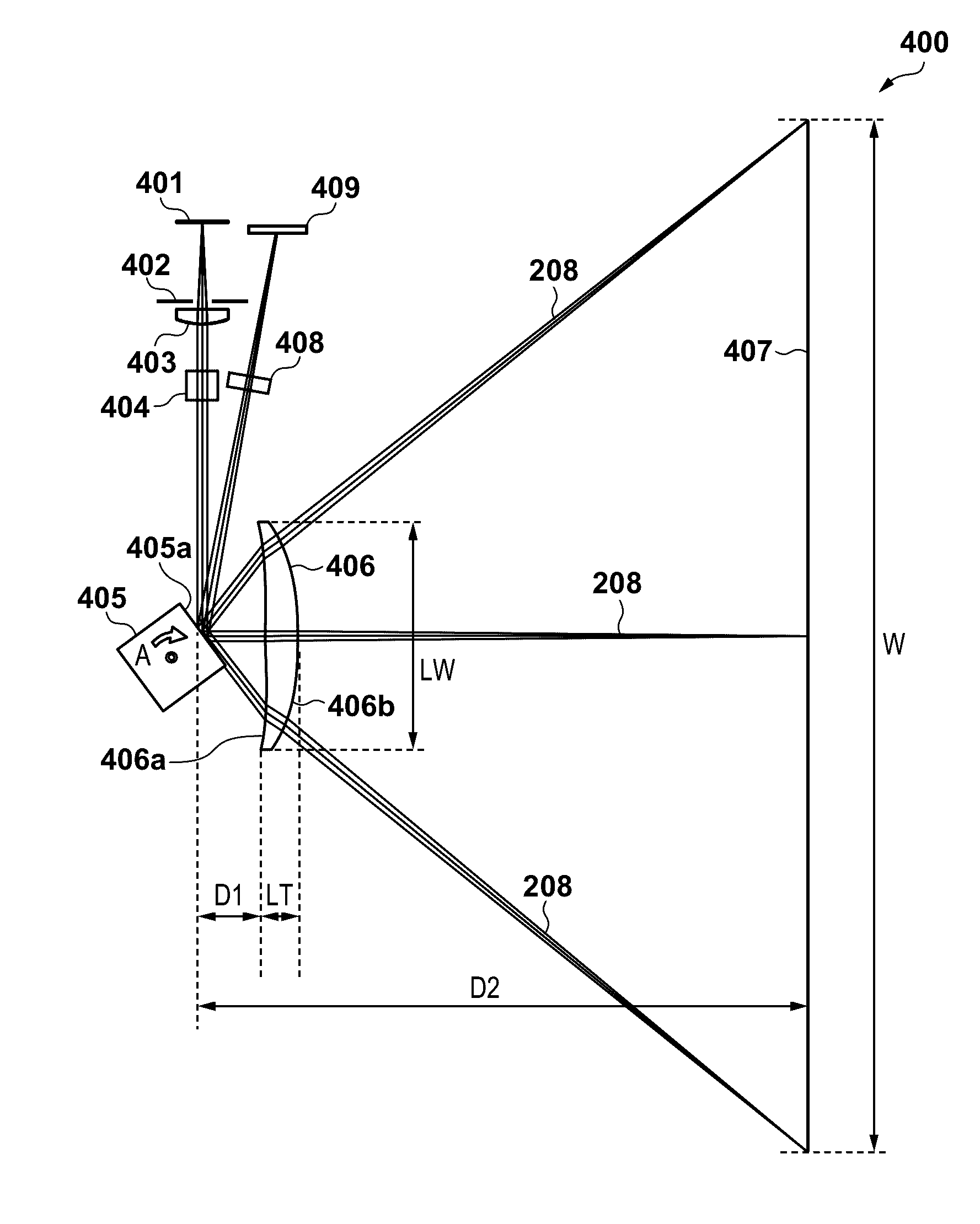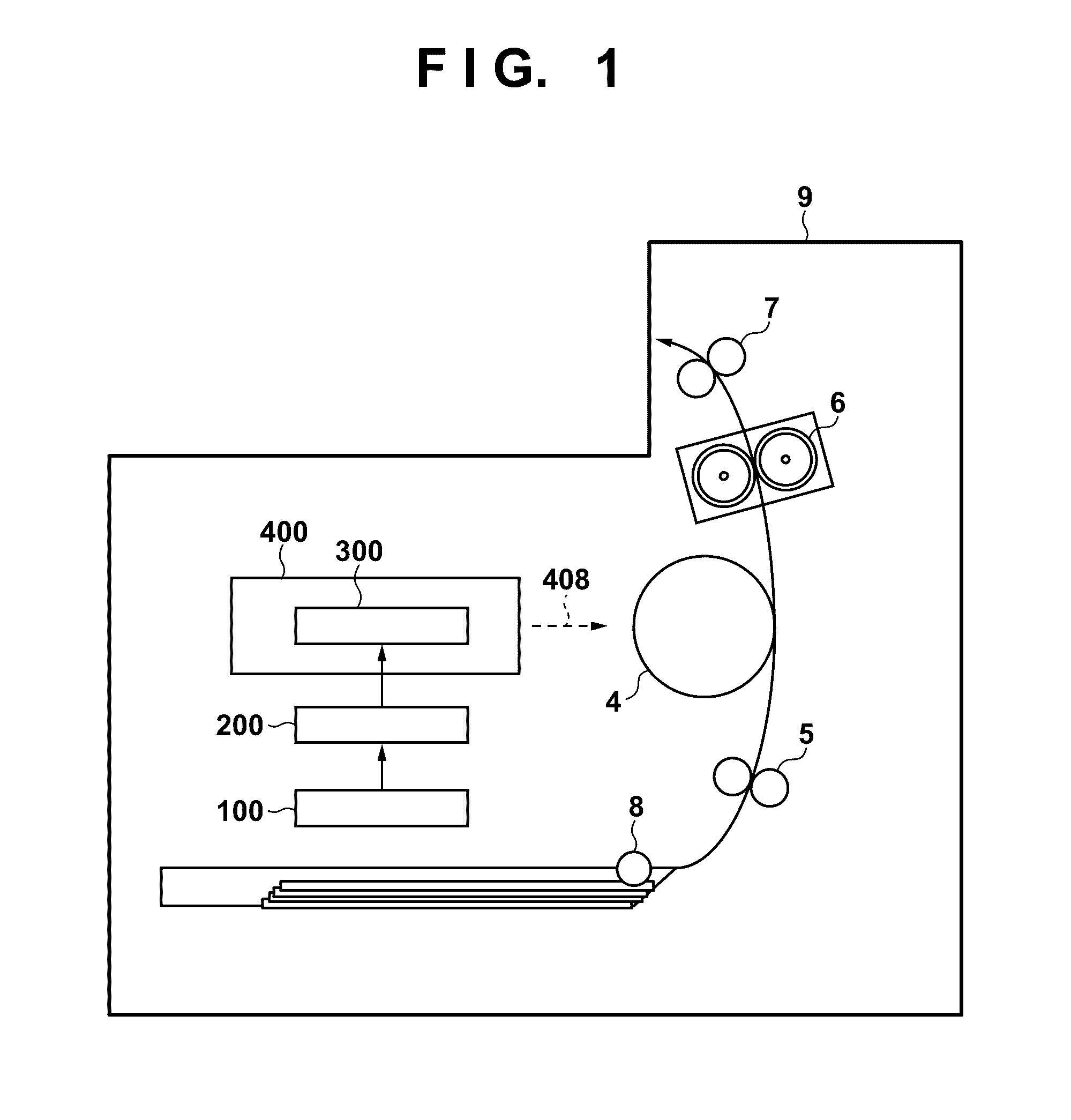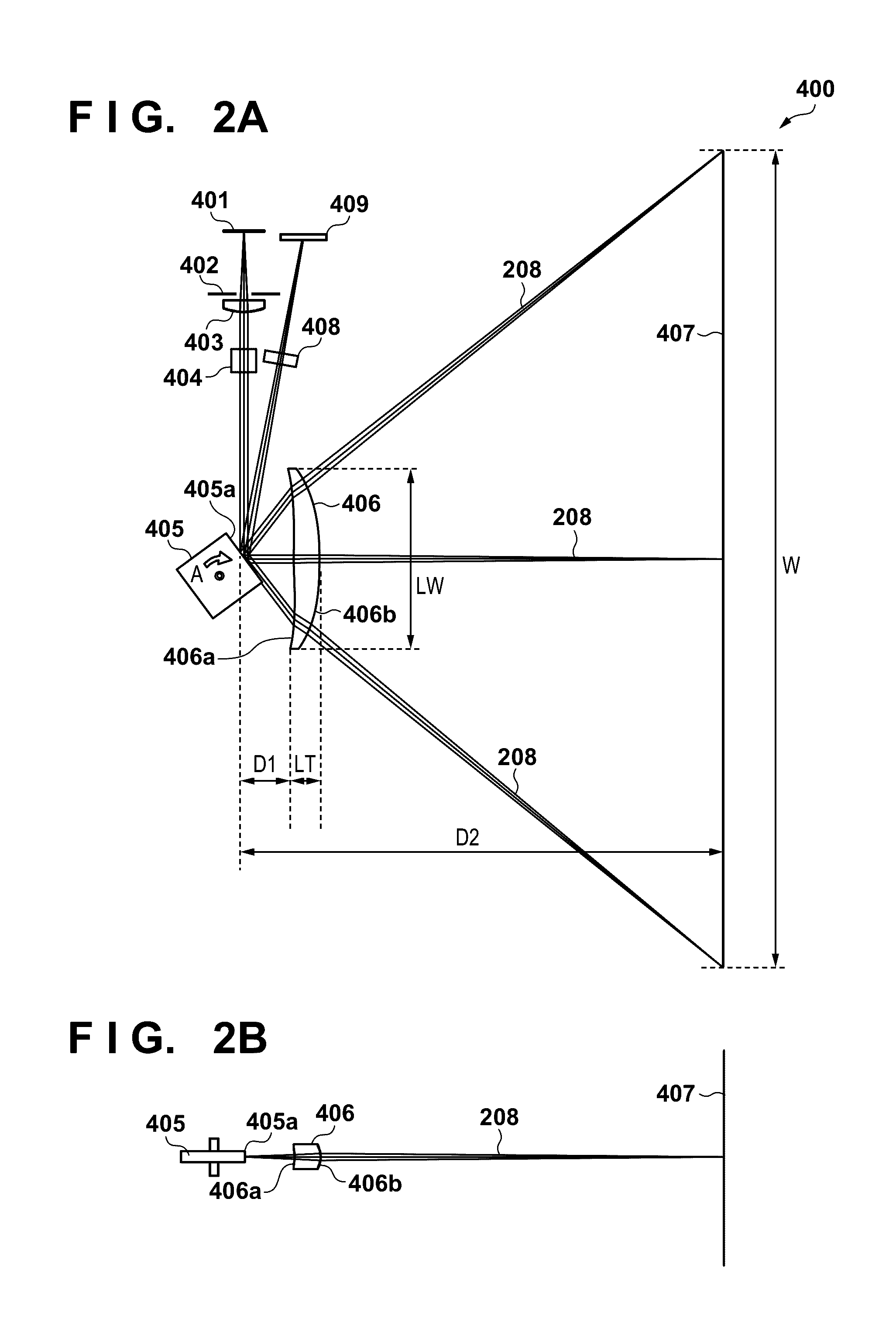Image forming apparatus and method
- Summary
- Abstract
- Description
- Claims
- Application Information
AI Technical Summary
Benefits of technology
Problems solved by technology
Method used
Image
Examples
first embodiment
[0029]Configuration of Image Forming Apparatus
[0030]FIG. 1 is a schematic diagram showing the configuration of an image forming apparatus 9. A laser driving unit 300 within a light scanning unit 400, which is a light scanner, turns on scanning light (laser light) 208 based on image signals output from an image signal generation unit 100, and control signals output from a control unit 200. A photosensitive member (photosensitive drum) 4 charged by a charger (not illustrated) is operated with the laser light 208 so as to form a latent image on the surface of the photosensitive drum 4. The scanning light 208 is modulated so as to be turned on / off based on image signals that have undergone pulse width modulation, for example. Toner is attached to the latent image formed on the photosensitive drum 4 by a developing means (not illustrated) for storing toner as a developing agent, thereby forming a toner image. The toner image is transferred to a recording medium such as paper, which is fe...
second embodiment
[0069]In this embodiment, a configuration will be described in which a result similar to the first embodiment is obtained by weighting the calculation of an accumulation result of pixel counting. The difference is that the pixel count unit 202 of the first embodiment is changed to a pixel count unit 702. The configuration of this embodiment will be described below. The same reference numerals are assigned to the constituent elements similar to those in the first embodiment and the description thereof is omitted.
[0070]FIG. 7 is an electrical block diagram of image formation of this image forming apparatus 9 in this embodiment. This example is the same as the first embodiment in that the pixel count unit 702 receives the partial magnification characteristics information from the CPU 201 via the CPU bus 211 and obtains various setting values, and only processing executed by the pixel count unit 702 is different. Note that this embodiment is different from the first embodiment in that t...
third embodiment
[0077]In this embodiment, a configuration will be described in which pixel counting is performed for each of a plurality of areas obtained by dividing the image area in the main scanning direction, and after calculating the laser lighting ratio of each of the areas, the laser lighting ratio is multiplied by a predetermined correction coefficient and the calculation results for the areas are then averaged. A luminous flux converged by a lens that does not have the fθ characteristic such as the image forming lens 406 of this embodiment has different spot diameters at the on-axis image height and an off-axis image height, to be precise. Usually, the image forming apparatus 9 is designed such that change in the spot diameter in one main scanning operation does not influence the image quality, but in this embodiment, in order to more accurately estimate the toner consumption amount, a laser lighting ratio calculation value is corrected by multiplying the weighting coefficient calculated ...
PUM
 Login to View More
Login to View More Abstract
Description
Claims
Application Information
 Login to View More
Login to View More - R&D
- Intellectual Property
- Life Sciences
- Materials
- Tech Scout
- Unparalleled Data Quality
- Higher Quality Content
- 60% Fewer Hallucinations
Browse by: Latest US Patents, China's latest patents, Technical Efficacy Thesaurus, Application Domain, Technology Topic, Popular Technical Reports.
© 2025 PatSnap. All rights reserved.Legal|Privacy policy|Modern Slavery Act Transparency Statement|Sitemap|About US| Contact US: help@patsnap.com



